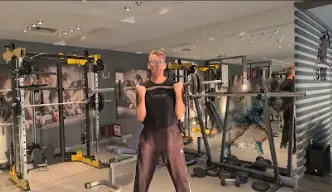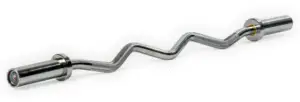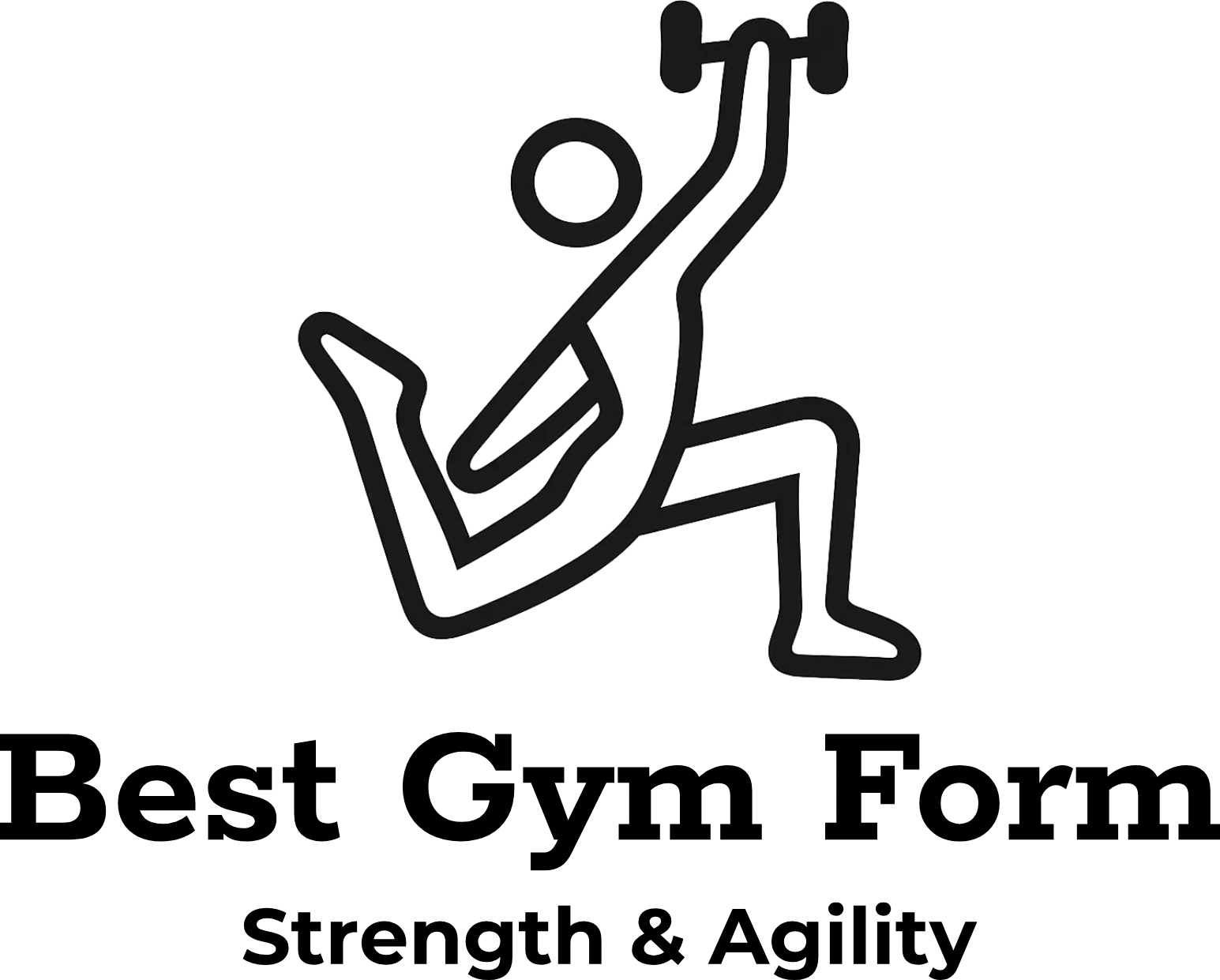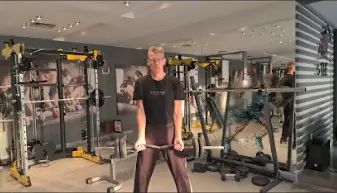How to do the Curlbar Curl with perfect form
(Biceps)
BENEFITS & MUSCLES WORKED: Biceps, Inside Forearms, Grip Strength
START POSITION: Pick up the curlbar with a Supinated (underhand) grip as shown. Keep it close to your body as you lift it, and straighten your back. Lean your weight back onto your heels. Bend your knees slightly for added stability during the exercise. Arms should be almost straight down, but elbows somewhat bent, and the bar resting somewhere on the front of your upper thighs.
NOTES: Difficulty Rating: 50%
I see too many people using too much weight for the Curlbar Curl. Using too much weight means you cannot perform the full range of motion for the exercise, and you have to start with more of a bend in your arms – this is because as the arms get straighter, the weight gets heavier – due to the lever (and pivot) laws of physics and biomechanics. In extreme cases, where you might have an ‘ego lifter’ cheating to keep up appearances, you will also notice other ‘cheating’ tools – a subtle bending and straightening of the knees to help catapult the weight upwards, or moving the torso from the hips and/or shoulders to help leverage the lift.
The Mojoh Method teaches you to keep every other part of the body still while moving only the parts that are supposed to move with the exercise.
Don’t lock out your elbows at the end of your straight arms, but do let the weight come down further – probably to almost touch your thighs. This is possible if you are correctly leaning back on your heels.
Suppose you practice the Curlbar Curl with lighter weights and higher reps for several weeks. In that case, your Range of Motion will be increased, leading to entirely shaped and larger biceps. Larger muscles generally mean stronger muscles, and the higher reps will help build muscle shape, definition, density, and athletic endurance. But if you do it the cheater’s way, you will ultimately end up with what are termed ‘golfball muscles’ – when a muscle becomes shaped like a golfball instead of a more elongated Rugby ball.
Keep your elbows tucked in to your sides, avoid rocking and swinging, and maintain rigid legs and knees (with a slight bend at the knee for stability).
I like to do Curlbar Curls (ultra lightweight with very high reps) right at the start of a Biceps workout. This is a good way to warm up the Biceps because you are using both arms simultaneously, which generates more work and heat. I like to do them again right at the end of my Biceps session, but this time I make them heavier (perhaps two sets of medium weights), and I always aim to get a ferocious burn to finish off my Biceps nicely. Try it. It does work.
Watch an excellent short YouTube video on proper form for Curlbar Curls (external)
14 Top Tips for doing an EZ barbell Curl with perfect form:
- Maintain a stable posture and stand with your feet shoulder-width apart
- Keep your knees slightly bent, and core engaged
- Avoid swinging your body or using momentum
- Use a shoulder-width, underhand grip on the EZ bar
- Ensure the curve of the bar feels comfortable on your hands and wrists
- Keep your elbows tucked close to your body throughout the movement Avoid letting them flare out or move forwards or backwards excessively
- Curl the bar upwards with a smooth, controlled motion, squeezing your biceps at the top
- Slowly lower the bar back to the starting position, resisting the weight during the eccentric phase
- Keep your head straight and your spine in a neutral position throughout the exercise
- Avoid looking upwards or downwards excessively
- Lower the bar almost to the point of full elbow extension, but don’t lock the joint. Then, curl it up as high as possible while maintaining control
- Remember to breathe properly throughout the exercise
- It’s best to keep your weight centred over your feet, rather than leaning back on your heels. This helps maintain balance and ensures your core is engaged properly to support your spine. However, becauseI’m experienced at this, I like to lean back on my heels more and bend my knees slighly as I tense my core to stabilize my back. This stance also helps tall people curl more effectively. Expiriment a little and see what suits your body type best
- Bending your knees slightly is a good idea for stability. It helps create a more balanced base and prevents you from locking your knees, which can be unstable. Just make sure not to bend them too much, turning it into a squat. Use just a soft bend, not a deep squat. It’s more about unlocking the knees and creating a more stable foundation than a significant bend.



